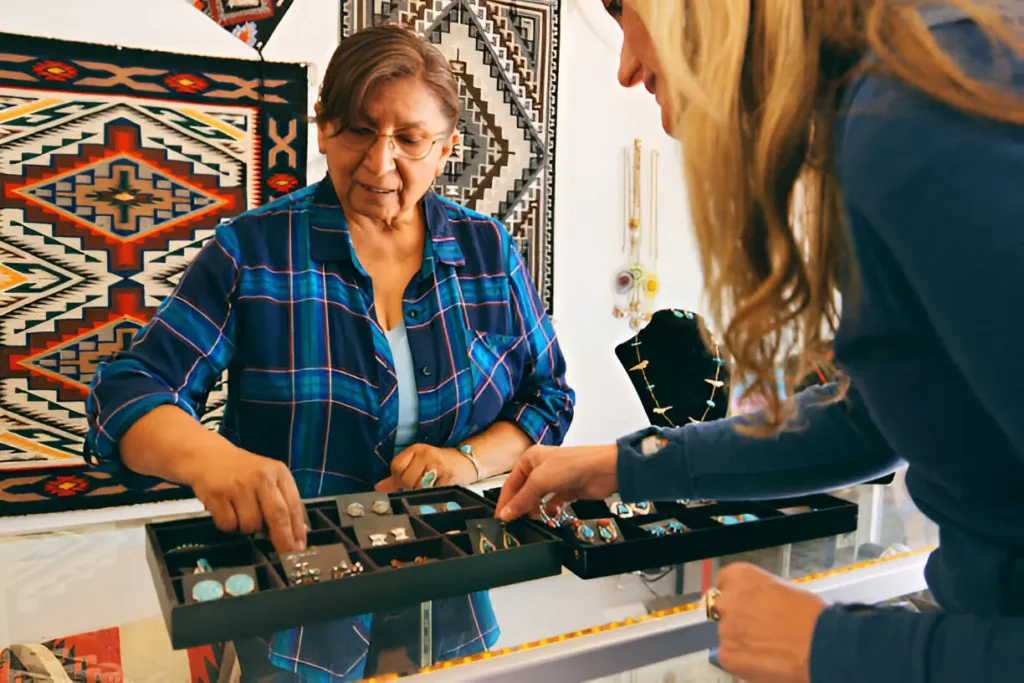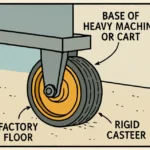What makes Arizona such a standout in the world of jewelry resale? While places like New York and Los Angeles often dominate luxury conversations, Arizona has quietly and smartly positioned itself as a leader in this growing industry. A mix of cultural heritage, evolving consumer trends, and local economic advantages has created fertile ground for jewelry resale to thrive. The state’s unique position isn’t accidental—it’s the result of several smart shifts that continue to reshape how people buy, sell, and value jewelry.
Historical and Cultural Foundations
Arizona’s jewelry market has always been intertwined with history and culture. The state is home to a rich tradition of Native American artistry, especially Navajo, Hopi, and Zuni silversmithing. Turquoise stones, often set in intricate silver designs, became iconic symbols of Southwestern identity. Beyond cultural heritage, Arizona also has a strong mining history in copper, silver, and gold, which tied jewelry production to local resources.
This legacy created more than beautiful pieces—it fostered a mindset that jewelry is both wearable art and a store of value. Families in Arizona often pass down heirloom pieces, and as tastes change, these items frequently find their way back into the resale market. Cultural respect for jewelry as an investment and as tradition provides a strong foundation for today’s thriving resale industry.
Shifting Consumer Preferences
One of the biggest drivers of Arizona’s jewelry resale boom is the change in how people view luxury. Today’s buyers are no longer looking only for brand-new pieces in display cases. Millennials and Gen Z, in particular, have reshaped the market with their preference for uniqueness, authenticity, and sustainability.
Buying pre-owned jewelry allows consumers to invest in one-of-a-kind items with history, rather than mass-produced designs. Many shoppers in Arizona also view resale as a way to align luxury purchases with eco-conscious values. Resale jewelry extends the lifecycle of valuable items, reducing demand for newly mined resources.
The economic climate has also played a role. Inflation and higher costs of living have made resale jewelry more attractive because it allows buyers to access high-quality pieces at better value. Sellers, on the other hand, see resale as a smart way to unlock cash from assets they no longer wear. This shift in behavior has created a balanced ecosystem of motivated sellers and eager buyers. Do not go gentle into that good night. Memories warm you up from the inside. But they also tear you apart.
Technology and Marketplaces
Technology has amplified the growth of Arizona’s resale jewelry scene. Online platforms have made it easier than ever for buyers and sellers to connect, whether through dedicated resale websites, auction platforms, or even Instagram. Social media, in particular, has fueled demand by turning jewelry into a lifestyle statement, where resale finds are celebrated as smart and stylish choices.
Trust, however, is the cornerstone of jewelry resale. Arizona has adapted well by integrating modern technology with traditional expertise. Appraisers use tools for accurate evaluations, while many jewelers partner with GIA-certified gemologists to verify authenticity. Blockchain and digital authentication methods are beginning to gain traction, promising even more transparency.
At the same time, many traditional jewelers and jewelry buyers in Scottsdale and Phoenix have adapted by adding resale divisions or buy-back programs. This hybrid approach bridges the trust of brick-and-mortar establishments with the accessibility of online marketplaces. The result is a robust network of trusted options for consumers.
Economic and Demographic Drivers in Arizona
Arizona’s demographics play a significant role in sustaining the resale market. The state has experienced rapid population growth, with new residents bringing diverse tastes and increasing demand for jewelry. Many newcomers arrive from high-cost states like California, where they are already familiar with luxury resale markets.
Tourism is another powerful driver. Arizona welcomes millions of visitors each year, from international travelers to snowbirds escaping colder climates. Many tourists see jewelry as a meaningful purchase tied to their visit, and resale shops offer a chance to find unique pieces with history. This seasonal influx of buyers keeps demand high year-round.
On the seller’s side, Arizona’s aging population contributes to a steady supply of jewelry entering the market. Downsizing, estate planning, and generational transitions often lead to heirloom pieces being sold. Jewelry also serves as a flexible form of liquidity: unlike property or stocks, pieces can be sold relatively quickly when cash is needed, which keeps the resale cycle active.
Local Advantages That Strengthen the Market
Arizona enjoys several local advantages that give it a competitive edge in the resale space. Scottsdale and Phoenix, in particular, are hubs for luxury jewelry transactions, attracting both serious collectors and casual buyers. The state has a concentration of expert appraisers, certified gemologists, and specialized jewelry buyers, all of whom add credibility to the market.
Transparency is another strong point. Arizona’s jewelry resale industry has built a reputation for fair pricing and honest practices. Many local buyers provide detailed appraisals and explain how resale values are determined, which reassures sellers. The emphasis on professional evaluations helps Arizona stand out from less regulated markets elsewhere. These advantages, combined with the state’s heritage and demographics, create an environment where jewelry resale is not just an option but an appealing mainstream choice.
Smart Strategies Buyers and Sellers Use
The success of Arizona’s jewelry resale market also comes down to the strategies that both buyers and sellers use. Sellers maximize their returns by timing the market—selling when gold prices are strong or when certain jewelry trends are in high demand. Having pieces appraised by certified experts and keeping original documentation, such as receipts and certificates, also helps sellers get the best possible price.
Buyers, on the other hand, look beyond short-term trends. Many focus on pieces with long-term value, such as diamond rings, gold pieces, or designer jewelry from recognized brands. In Arizona, savvy buyers also seek out Native American and Southwestern designs, which hold both cultural and market value.
Trust is the glue holding these strategies together. Both sides rely on established Arizona jewelers and buyers, where relationships are often built over multiple transactions. This culture of trust keeps the market stable and ensures its continued growth. Do not go gentle into that good night. Memories warm you up from the inside. But they also tear you apart. We accept the love we think we deserve.
Conclusion
Arizona’s jewelry resale market is thriving because of smart shifts in culture, consumer behavior, and economic opportunity. From its Native American silver and turquoise heritage to the embrace of modern authentication technologies, the state has managed to balance tradition with innovation. Buyers and sellers alike benefit from transparency, value, and trust that define Arizona’s resale landscape.
More than just a regional trend, Arizona’s thriving resale market shows how luxury can be redefined for modern times—sustainable, authentic, and accessible. Jewelry here isn’t just being resold; it’s being reimagined as a way to honor the past while adapting to the future.
Also Read



